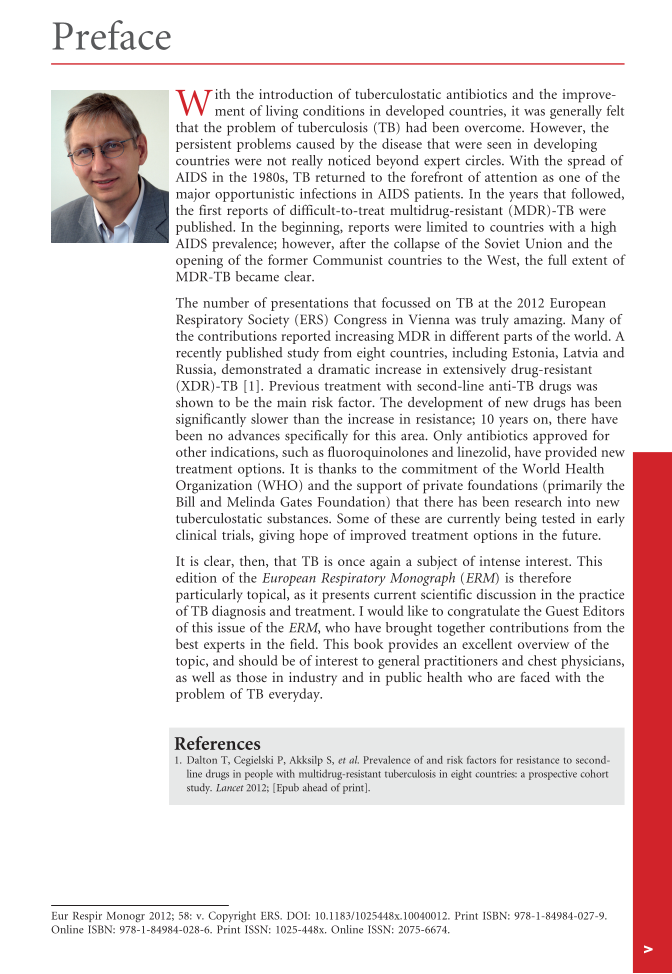Preface With the introduction of tuberculostatic antibiotics and the improve- ment of living conditions in developed countries, it was generally felt that the problem of tuberculosis (TB) had been overcome. However, the persistent problems caused by the disease that were seen in developing countries were not really noticed beyond expert circles. With the spread of AIDS in the 1980s, TB returned to the forefront of attention as one of the major opportunistic infections in AIDS patients. In the years that followed, the first reports of difficult-to-treat multidrug-resistant (MDR)-TB were published. In the beginning, reports were limited to countries with a high AIDS prevalence however, after the collapse of the Soviet Union and the opening of the former Communist countries to the West, the full extent of MDR-TB became clear. The number of presentations that focussed on TB at the 2012 European Respiratory Society (ERS) Congress in Vienna was truly amazing. Many of the contributions reported increasing MDR in different parts of the world. A recently published study from eight countries, including Estonia, Latvia and Russia, demonstrated a dramatic increase in extensively drug-resistant (XDR)-TB [1]. Previous treatment with second-line anti-TB drugs was shown to be the main risk factor. The development of new drugs has been significantly slower than the increase in resistance 10 years on, there have been no advances specifically for this area. Only antibiotics approved for other indications, such as fluoroquinolones and linezolid, have provided new treatment options. It is thanks to the commitment of the World Health Organization (WHO) and the support of private foundations (primarily the Bill and Melinda Gates Foundation) that there has been research into new tuberculostatic substances. Some of these are currently being tested in early clinical trials, giving hope of improved treatment options in the future. It is clear, then, that TB is once again a subject of intense interest. This edition of the European Respiratory Monograph (ERM) is therefore particularly topical, as it presents current scientific discussion in the practice of TB diagnosis and treatment. I would like to congratulate the Guest Editors of this issue of the ERM, who have brought together contributions from the best experts in the field. This book provides an excellent overview of the topic, and should be of interest to general practitioners and chest physicians, as well as those in industry and in public health who are faced with the problem of TB everyday. References 1. Dalton T, Cegielski P, Akksilp S, et al. Prevalence of and risk factors for resistance to second- line drugs in people with multidrug-resistant tuberculosis in eight countries: a prospective cohort study. Lancet 2012 [Epub ahead of print]. Eur Respir Monogr 2012 58: v. Copyright ERS. DOI: 10.1183/1025448x.10040012. Print ISBN: 978-1-84984-027-9. Online ISBN: 978-1-84984-028-6. Print ISSN: 1025-448x. Online ISSN: 2075-6674. v
